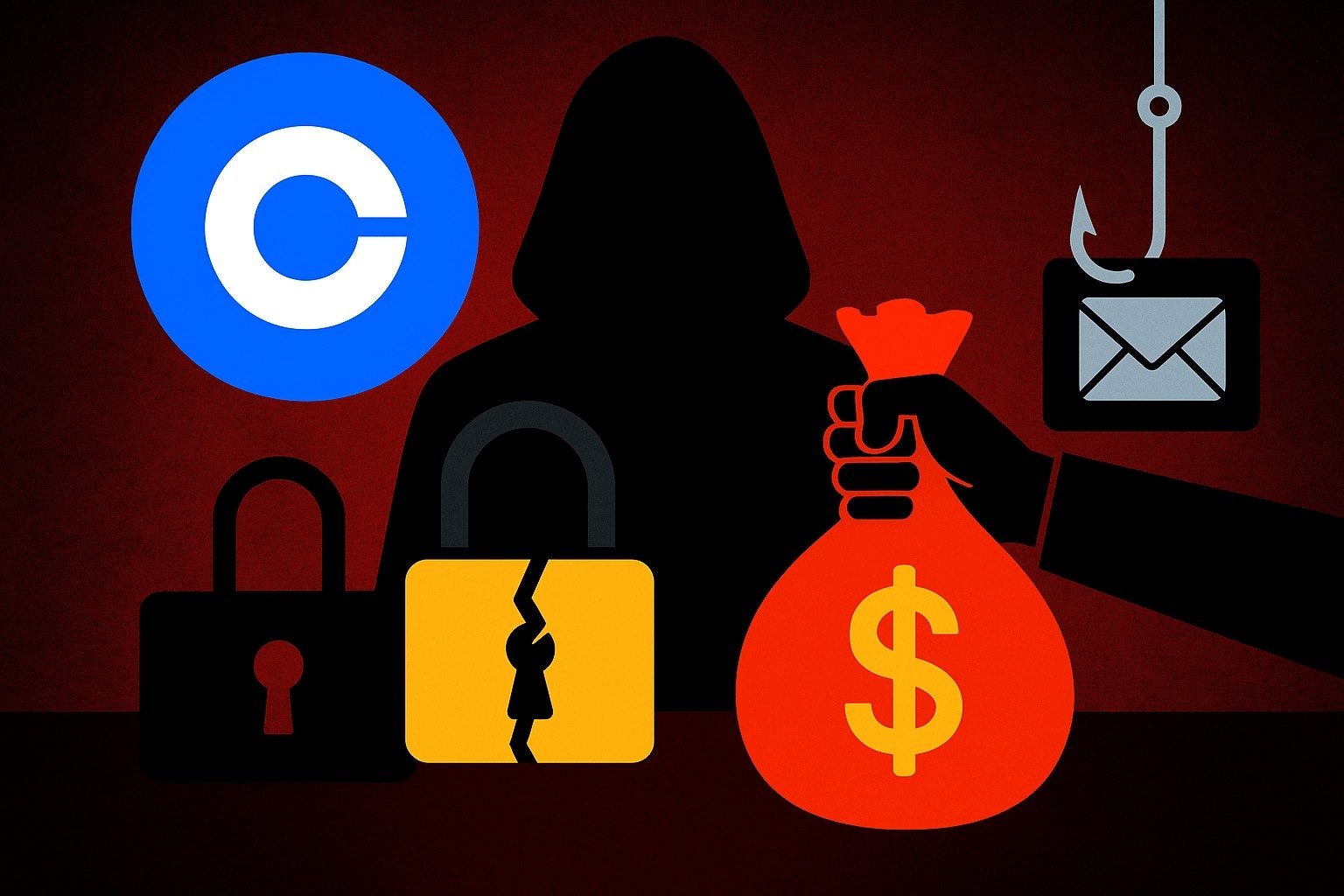Coinbase's $400M Wake-Up Call: How Bribed Insiders and a Phishing Blitz Cracked the Crypto Giant
In the world of crypto, breaches are often blamed on shady code, rogue smart contracts, or zero-day exploits. But Coinbase’s lates t security fiasco proves that sometimes the biggest threats don’t come from code — they come from people.
In a stunning disclosure this week, Coinbase revealed that a recent hack involving bribed insiders and a $20 million ransom demand may end up costing the company as much as $400 million. While only a “small subset” of customer data was compromised, the fallout has been wide-reaching — rattling markets, drawing fresh scrutiny from regulators, and sparking an urgent conversation about insider threats in the crypto age.
A Heist in Plain Sight: What Happened?
The breach unfolded like a digital thriller with an old-school twist.
On May 11, Coinbase received an email from an unknown actor claiming to have access to sensitive customer data and internal documentation. It wasn’t just a bluff. Upon investigation, the company discovered that multiple overseas contractors in customer support roles had been bribed — paid off by hackers to leak internal records and user data.
The attackers didn’t exploit a server vulnerability. They exploited human vulnerability — waving cash at employees and walking away with customer names, email addresses, and contact information.
No passwords or wallet keys were stolen, which is critical. But the attackers didn’t need them. With just the contact info, they launched a highly targeted phishing campaign, tricking some users into voluntarily sending crypto to addresses controlled by the attackers.
And then came the ultimatum: Pay us $20 million, or we leak everything. Coinbase refused to pay. Instead, the company fired the implicated insiders, alerted law enforcement, and launched an internal cleanup.
“We do not negotiate with extortionists,” the company essentially said, choosing principle over payoff — even at a steep cost.
The Damage: Up to $400 Million and a Hit to Trust
In an SEC filing, Coinbase estimated its losses from the breach could run between $180 million and $400 million. That includes reimbursing victims who were duped by phishing, legal expenses, incident response costs, and likely some major upgrades to its internal security practices.
For context, $400 million is nearly 5% of Coinbase’s total revenue in 2023 — not catastrophic, but certainly painful.
What stings even more is the reputational damage. Coinbase has positioned itself as the most regulated, publicly traded, and “clean” crypto exchange in the U.S. To be breached by something as low-tech as bribery and phishing undermines that trust.
The company insists no customer funds were directly accessed, and that users who lost funds due to phishing will be made whole — a move that, while costly, may be essential to preserving user loyalty.
The Real Vulnerability: People
If there’s one thing this hack made clear, it’s this: humans remain the weakest link in cybersecurity — especially in high-value targets like crypto.
Coinbase’s systems are among the most secure in the industry: multi-layered authentication, cold storage, bug bounties, and penetration testing galore. But none of that matters if a contractor in an outsourced support center is willing to sell your data.
This breach didn’t involve complex zero-days or AI-driven attacks. It was good old-fashioned social engineering and greed.
The problem is systemic. Many tech companies, including crypto firms, outsource customer service roles to third parties abroad. These workers — while often skilled — may not be subject to the same background checks, compensation packages, or loyalty incentives as core employees. Yet, they often have direct access to customer data.
It’s a classic risk-vs-cost tradeoff, and Coinbase just got burned on it.
Expect to see much tighter access control, better data segmentation, and more aggressive internal monitoring industry-wide in the wake of this incident.
The Phishing Aftershock: How Users Were Hit
Once the attackers had names and contact details, they turned to a tried-and-true method: phishing.
Customers began receiving texts, emails, or calls that looked convincingly like official Coinbase communications — often referencing real data points from the breach to seem legitimate.
Some users fell for it. And since Coinbase didn’t lose access credentials in the breach, it was up to users to resist these manipulative social tactics. Some didn’t — and funds were transferred to criminal wallets.
To its credit, Coinbase said it would reimburse users who were duped, taking responsibility for the initial data leak even if the final step involved user error.
But it’s a sobering reminder: phishing is no longer just generic spam. With real user data in hand, scammers can make these messages terrifyingly believable.
Regulatory Heat and Market Response
The fallout didn’t end with customer reimbursements.
The Securities and Exchange Commission (SEC) is now probing how Coinbase handles user data — and whether it may have misrepresented user metrics in filings to investors.
According to Reuters, the SEC wants to know if Coinbase properly disclosed how many verified users it had, and whether this breach reveals deeper issues with its compliance framework — especially its KYC (Know Your Customer) processes.
Coinbase’s legal chief dismissed the probe as a “holdover” from a previous administration and called for the inquiry to be closed. But the timing couldn’t be worse. The company is already locked in a high-profile legal fight with the SEC over whether it listed unregistered securities on its platform.
Then came the market hit: Coinbase’s stock slid more than 6% after the news broke — casting a shadow over what should’ve been a celebration, as the company is set to join the S&P 500 index.
Instead of popping champagne, Coinbase was issuing breach disclosures.
What This Means for Crypto Security Going Forward
This hack is a watershed moment not just for Coinbase, but for the entire crypto industry.
It’s no longer enough to secure your code or build a fortress around your servers. The real challenge is building resilient internal systems that prevent insiders from becoming liabilities.
That includes:
- Zero-trust policies (no one gets access by default)
- Behavioral monitoring for unusual data access
- Stricter vendor risk management
- Regular phishing simulations and awareness campaigns
- And perhaps most importantly, greater transparency with users.
Coinbase made the right call by disclosing the breach quickly and promising to cover customer losses. But it still highlights how centralized exchanges — even the most respected ones — carry risks that decentralization aims to avoid.
That doesn’t mean DeFi is immune (we’ve seen plenty of smart contract hacks), but it does reopen the debate about whether custodial models are truly safer, or just more familiar.
Bottom Line: Human Weakness is the New Crypto Exploit
Coinbase will survive this, and probably emerge more hardened. But the breach will leave scars — on its finances, on its public image, and on the broader conversation about how secure crypto really is.
In an industry defined by code, the human element is proving to be both its greatest vulnerability and its hardest to fix.
For crypto users, the takeaway is clear: Always verify messages before acting. Never click suspicious links. And remember — the real risk isn’t always a hacker with a laptop. Sometimes, it’s a rogue insider with your phone number.















